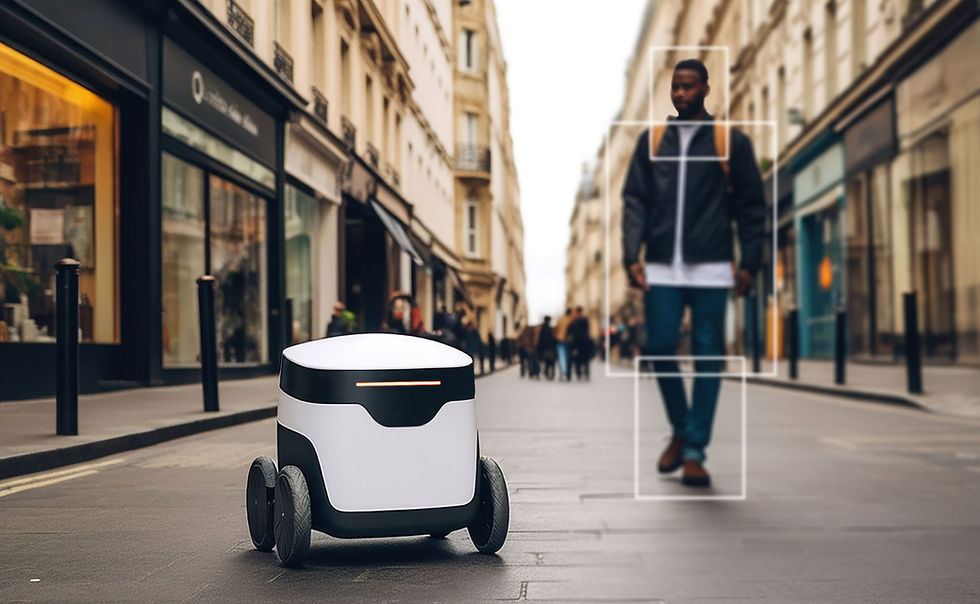LabRat.ai: India's Leap Toward Architectural Intelligence in a Global AI Age
- ratlab2012
- Jun 12
- 3 min read
In a time where every industry is racing to adopt Artificial Intelligence (AI), architecture is slowly but steadily redefining its relationship with technology. While global headlines speak of breakthroughs from Apple Intelligence, OpenAI, and Microsoft Copilot, a quieter evolution is unfolding in India’s architectural landscape.
At the center of this silent shift is LabRat.ai—not a product, not a platform, not public-facing—but an internal AI engine developed by rat[LAB] Studio, fueling the studio’s creative workflows in architecture, interior design, facades, art installations, and education.
It is Architectural Intelligence, built for ourselves—by ourselves. It works in silence, behind the screens. And it’s changing everything.



🌍 The Global AI Landscape: Why Now?
Artificial Intelligence is no longer the future—it is the design partner of the present. The world’s biggest technology firms are now deeply invested in it:
Apple launched Apple Intelligence, blending privacy-first AI with ChatGPT support in iOS 18 and macOS Sequoia.
Microsoft Copilot integrates GPT-4o into Office 365, Windows, and design workflows.
Google’s Gemini, Anthropic’s Claude, and Meta’s LLaMA compete in the generative and multimodal space.

According to the World Economic Forum, nearly 40% of skills in design-related industries will undergo AI-driven transformation by 2030. The Harvard Business Review further notes that vertical AI—AI tailored to specific industries—will drive deeper, more meaningful disruption than general-purpose models.
That’s exactly the philosophy behind LabRat.ai.
🧱 The Digital Evolution of Architecture: From CAD to AI
Architecture has always evolved with the tools of its time. Today, we are witnessing the fourth major transformation in how architecture is designed, documented, and delivered:

Era | Technology | Role |
1980s | CAD (Computer-Aided Design) | Replaced hand drafting with digital precision |
1990s | BIM (Building Information Modeling) | Integrated data into design and collaboration |
2000s | Computational Design | Enabled parametric and generative workflows |
2020s | AI in Architecture | Introduces cognition, feedback, and prediction into design |
This is more than just a timeline. It is the digitalization of architecture, culminating in AI engines that don’t just draft—but think.

🧠 What Is LabRat.ai?
LabRat.ai is an internal AI-powered engine being developed and deployed exclusively within rat[LAB] Studio. It is not a commercial tool. It is not for public use. It is a silent engine that powers our own methodologies, thinking with us and learning from our workflows.
This system is trained on years of design data, parametric workflows, studio transcripts, fabrication logics, and prototyping strategies. It is used internally to:
Interpret and assist parametric design logic in Grasshopper, Maya, and Rhino.
Generate smart BOQs and cost estimates by reading data-rich files.
Explore form variations, material behaviors, and spatial strategies.
Assist in computational design education (through SmartLabs) by supporting backend workflows—not student-facing, but tutor-empowering.
LabRat.ai is not Artificial Intelligence as we know it. It is Architectural Intelligence—built from scratch, not scraped from the internet.

🛠 What Is It Doing Behind the Scenes?
Though still evolving, LabRat.ai already plays a role in shaping our design logic:
🧩 Parametric Refinement – Offers internal design suggestions during complex script development.
📐 AI-Aided Sketch Logic – Generates provocations and directions for form generation.
🏗️ Material-Aware Feedback – Assesses feasibility based on our material library (steel, GFRC, ACP, wood).
📊 BOQ Drafting – Automates mundane tasks like quantity take-offs and documentation prep.
🔁 Iteration Feedback – Prompts alternate solutions during early-stage ideation.
This isn’t visual output—it’s deep intelligence in the creative process.

🔐 Not for Public Use. Not Open Source. Not Yet.
Let’s be clear: LabRat.ai is not an app. It is not a plugin. It is not a tool you can buy, try, or subscribe to.
This is our internal experiment in design cognition, shaping the rat[LAB] Studio operating system.
While others build generic platforms, we’re building a specific layer of intelligence deeply tuned to architecture, fabrication, and design education.
It’s not a startup story. It’s a studio story.
🤫 Why Are We Talking About It Now?
Because AI in architecture is no longer optional—it’s essential. Because the real innovation lies not in flashy generative renders, but in quiet integrations that amplify design thinking.
LabRat.ai is not ready for public launch. It may never be. But it exists—and it’s already reshaping the way we work.
This post isn’t a product announcement. It’s a statement of intent.


🧠 Final Thoughts: The Invisible Hand Behind Design
At rat[LAB] Studio, we’ve always believed in breaking complexity—in revealing the unseen forces that shape design.
LabRat.ai is one such force. It is not a public tool. It is not a loud idea. It is an internal intelligence quietly refining the way we sketch, model, fabricate, and imagine.
The world will continue to talk about AI in architecture as the next big thing.We prefer to build it in silence.
Visit www.rat-lab.org/labrat-ai to explore our journey. Not to use it—but to understand the philosophy behind it.
![rat[LAB] Logo](https://static.wixstatic.com/media/620f22_133c4fae783c4e2dbc4d10827a47885e~mv2.png/v1/crop/x_0,y_413,w_6019,h_1108/fill/w_300,h_50,al_c,q_85,usm_0.66_1.00_0.01,enc_avif,quality_auto/rat%5BLAB%5D%20Logo.png)






Comments